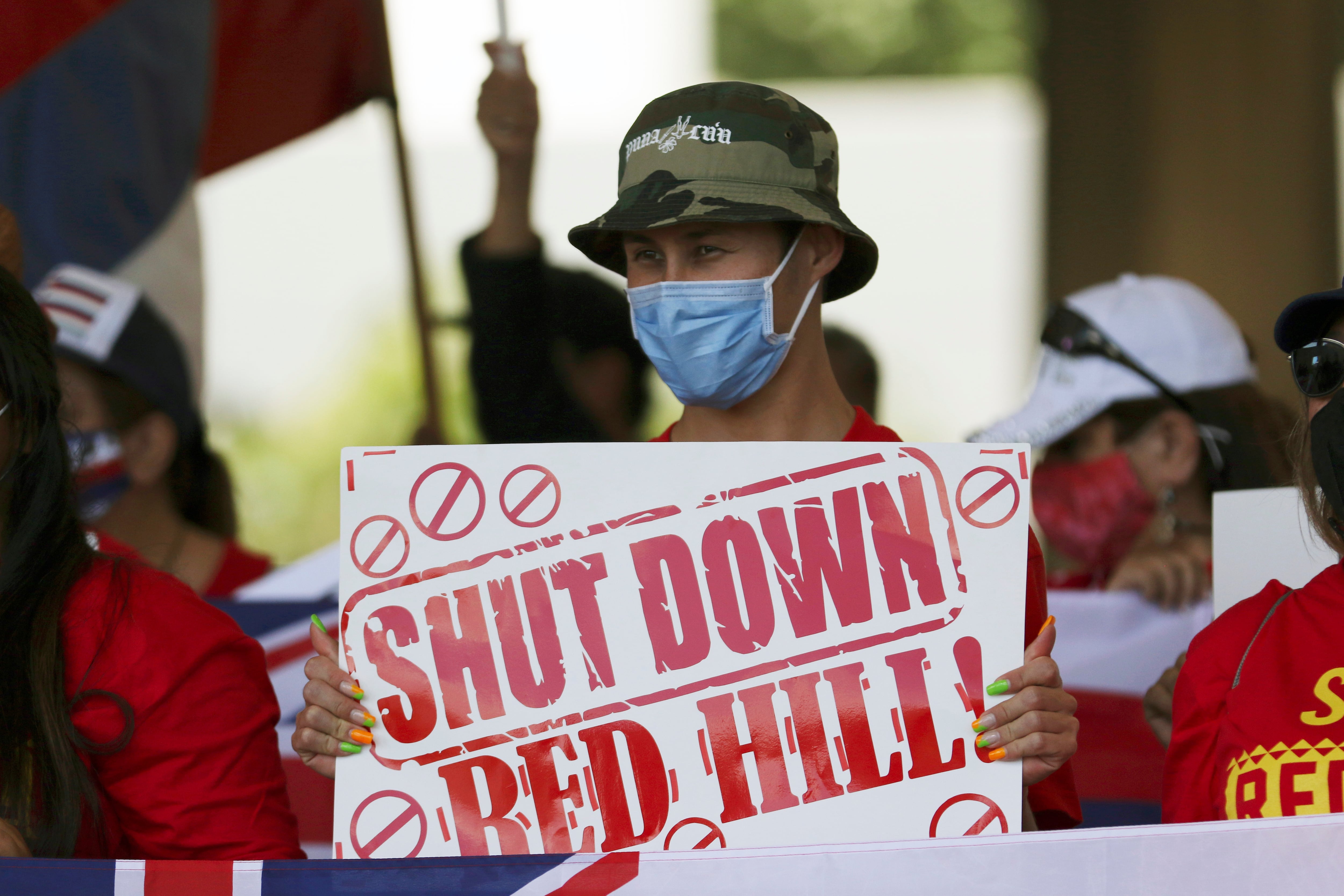The U.S. government said Monday it took responsibility for jet fuel that leaked into a Navy water system serving 93,000 people in 2021, but attorneys dispute whether the families who are suing were exposed to enough tainted water to make them sick.
A trial for a mass environmental injury case began in federal court in Honolulu on Monday, more than two years after a U.S. military fuel tank facility under ground poisoned thousands of people when it leaked jet fuel into Pearl Harbor’s drinking water.
Instead of a jury, a judge is hearing about a lawsuit against the United States by 17 “bellwether” plaintiffs: a cross-selection of relatives of military members representing more than 7,500 others, including service members, in three federal lawsuits.
According to court documents, the U.S. government has admitted the Nov. 20, 2021, spill at the Red Hill Bulk Fuel Storage Facility caused a nuisance for the plaintiffs, that the United States “breached its duty of care” and that the plaintiffs suffered compensable injuries.
But they dispute whether the residents were exposed to jet fuel at levels high enough to cause their alleged health effects, ranging from vomiting to rashes.
RELATED

The plaintiffs have submitted declarations describing how the water crisis sickened them and left them with ongoing health problems, including seizures, asthma, eczema and vestibular dysfunction.
The Navy mobilized after getting reports about the water, Rosemary Yogiaveetil, an attorney with the U.S. Department of Justice, said in an opening statement in court. Crews went to homes and began taking water samples and officials shut down the Red Hill well as a precaution, she said.
They began “flushing each and every home on the water line,” to restore clean water, Yogiaveetil said. The Navy began providing bottled water and paid for months of hotel rooms for some affected families.
Lawyers for the plaintiffs argue Navy officials knew there was fuel in the water and failed to warn people not to drink it, even while telling residents the water was safe.
The families lost trust in the institutions they themselves served, Kristina Baehr, one of the attorneys for the plaintiffs, said in an opening statement.
“Home was supposed to be a place they felt safe,” especially during the pandemic, she said.
Nastasia Freeman, wife of a Navy officer and mother of three, described in her declaration how the family thought their vomiting and diarrhea was Thanksgiving food poisoning.
“I had developed a rash on my arms with sores and lesions on my scalp, feet, and hands accompanied by a headache,” she wrote. “I had a very strange sensation that I had never had before — I felt like my blood was on fire.”
Even their dogs were vomiting.
On Nov. 29, a nurse told her she received multiple calls all with a common theme: the tap water.
“It felt like we were being gaslit,” Freeman’s declaration said. “We knew the water wasn’t safe, but the Navy was telling us that it was. They said they didn’t know what was in the water and that they were ‘investigating.’”
She was expected to be the first of the plaintiffs to be cross-examined in court Monday.
Experts will testify during the trial that the “myriad of injuries” the plaintiffs claim were preexisting conditions or had no known link to the fuel exposure, Yogiaveetil said.
A Navy investigation report in 2022 listed a cascading series of mistakes from May 6, 2021, when an operator error caused a pipe to rupture and caused 21,000 gallons of fuel to spill while it was transferred between tanks. Most of this fuel spilled into a fire suppression line and sat there for six months, causing the line to sag. When a cart rammed into this sagging line on Nov. 20, it released 20,000 gallons of fuel.
When people started speaking up about the water, the Navy understood there had been a leak on Nov. 20, but at the time, they believed it was contained, Yogiaveetil said Monday.
The military eventually agreed to drain the tanks, amid state orders and protests from Native Hawaiians and other Hawaii residents concerned about the threat posed to Honolulu’s water supply. The tanks sit above an aquifer supplying water to 400,000 people in urban Honolulu.
Outside the courthouse Monday, activists calling themselves water protectors held signs in support of the plaintiffs.
A lot is riding on this trial.
“A bellwether trial helps attorneys to understand the likely success or failure of the cases that are in the pipeline,” explained Loretta Sheehan, a Honolulu-based personal injury attorney not involved in the water litigation.
The outcome can help determine future damages to be awarded or settlements, she said.





